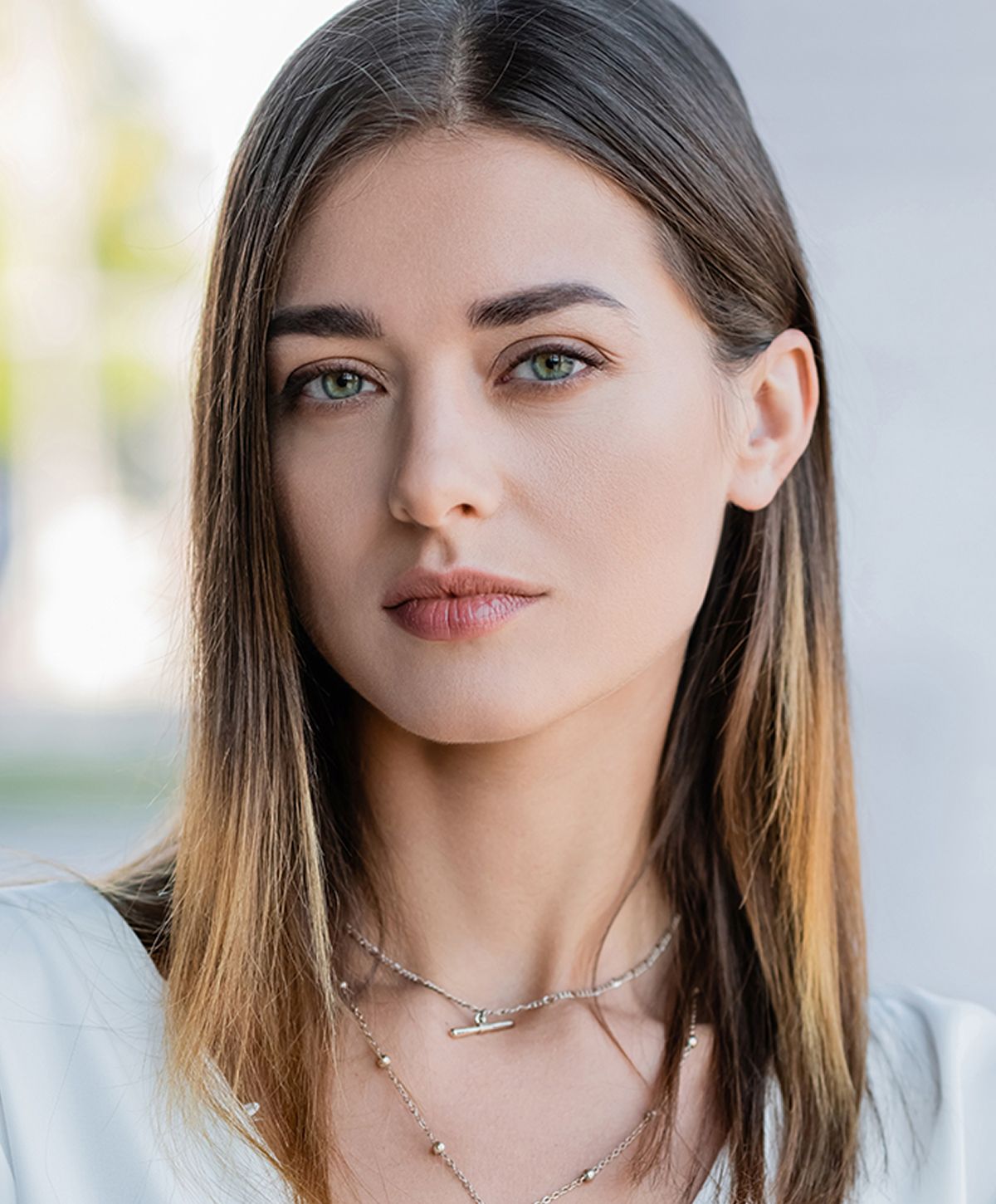
in San Diego County

As we age, the lower eyelids often develop visible puffiness, dark circles, or sagging skin due to the natural descent of fat pads, reduced skin elasticity, and weakening of the lower eyelid muscles. This can lead to an aged or fatigued appearance that eye creams and noninvasive treatments can't correct. Lower blepharoplasty is a highly refined eyelid surgery designed to reduce excess lower eyelid skin, reposition lower eyelid fat pads, and smooth the lid-cheek junction.
At Schoemann Plastic Surgery, double board-certified plastic surgeon Dr. Mark Schoemann specializes in lower eyelid blepharoplasty using advanced techniques tailored to your facial anatomy and aesthetic goals. At our office in Encinitas lower blepharoplasty smooths and sculpts this common problem area to impart a brighter, more refreshed appearance. Whether you’ve noticed a sunken tear trough, bulging fat, or excess skin, Dr. Schoemann’s approach to cosmetic eyelid surgery prioritizes precision, safety, and natural-looking results.

Repositions or removes fat pads to smooth bulges beneath the eyes

Improves laxity and tightens sagging lower eyelid skin

Typically performed with local anesthesia and sedation

Swelling and bruising peak in the first week, with most patients returning to work in about 10 days

Transconjunctival lower blepharoplasty avoids visible scars on the eyelid margin
Lower blepharoplasty is a cosmetic surgical procedure designed to improve the appearance of puffiness, bags, and loose skin in the under-eye area.
In many cases, Dr. Schoemann can perform surgery using the transconjunctival approach, accessing the underlying tissues through the inside of the lower eyelid, meaning there are no external incisions. When external incisions are needed, Dr. Schoemann conceals them beneath the lash line where they heal to become virtually imperceptible. Surgical techniques can include removal of excess skin, muscle tightening, and fat repositioning to fill in hollow tear troughs.
Patients experiencing lower eyelid laxity or tear trough deformity (a sunken appearance under the eyes) may be especially well-suited for this procedure. For more comprehensive rejuvenation, lower blepharoplasty can be performed alongside upper blepharoplasty or a brow lift to address both the upper and lower eyelids.

Lower blepharoplasty is an outpatient procedure that is typically performed under local anesthesia with sedation or general anesthesia.
Depending on your needs, Dr. Schoemann may make a transconjunctival incision within the lower lid to access and reposition the fat pads without external scars. If skin excision is necessary, a small incision is created beneath the lower lash line. For patients with lower eyelid laxity, techniques like lateral canthopexy may be used to tighten the outer corners of the lower eyelid.
This highly specialized surgical procedure may also address deeper anatomical structures including the inferior oblique muscle and orbital septum. Dr. Schoemann’s meticulous technique helps reduce visible scarring and promotes a smooth, natural-looking outcome.

With lower blepharoplasty Encinitas patients can treat several age-related and genetic conditions that affect the lower lids. By addressing both the fat and skin layers, this cosmetic procedure helps improve the appearance of tired, aged eyes with minimal downtime.
Lower blepharoplasty in Encinitas provides both cosmetic and emotional benefits. Patients often report looking more rested and youthful, which can improve self-confidence and first impressions.
The procedure removes excess fat and excess skin while smoothing the lower eyelid margin and lid-cheek junction, helping restore a balanced and harmonious appearance. While dermal fillers can offer temporary improvement, surgical removal of excess lower eyelid skin or repositioning of the fat pads yields long-lasting results. When performed by an experienced plastic surgeon like Dr. Schoemann, this surgery delivers natural-looking enhancement without an overdone or “hollowed” look.

You may be a good candidate for lower eyelid blepharoplasty if you are bothered by puffy lower eyelids, sagging eyelid skin, or hollow under-eye areas that don’t respond to topical treatments.
Ideal candidates are in good health, have no major eye disease, and have realistic expectations about the cosmetic results. Dr. Schoemann will review your medical history, eye health, and facial structure to determine if this surgical procedure is safe and appropriate for you.
Certain conditions such as dry eyes, poor skin elasticity, or previous reconstructive surgery may be relative contraindications. During your consultation, we’ll also discuss any use of herbal supplements or medications that may affect the healing process, ensuring you are prepared to undergo the procedure with minimal risk.

After surgery, you’ll be monitored briefly in a recovery room before heading home. Eyelid surgery involves mild post-surgical discomfort that is typically well-managed with over-the-counter pain medicine.
Cold compresses and prescribed eye drops will help reduce swelling and bruising. Patients should sleep with their head elevated and avoid strenuous activities or sun exposure during the initial recovery period. Absorbable sutures are typically used, and visible scars—if any—are minimal and tend to blend in very well over time. Most of our Encinitas lower blepharoplasty patients return to work or social activities within 7–10 days.
Initial improvements in the lower eyelids become visible as swelling subsides, usually within 1–2 weeks. Final results can take a few months as the tissues fully settle. The under-eye area will appear smoother, firmer, and more youthful, with a dramatic reduction in dark circles, puffiness, and sagging.
These results are typically long-lasting, especially when combined with a healthy lifestyle and proper skincare. Lower blepharoplasty can have a powerful impact on your overall appearance and confidence, helping your eyes look as vibrant as you feel.

Choosing the right surgeon for lower blepharoplasty is essential. Dr. Schoemann is a double board-certified plastic surgeon with extensive experience in both cosmetic blepharoplasty and reconstructive surgery. He tailors each lower eyelid surgery to the unique anatomy of the patient, ensuring a smooth, natural contour and stable lower eyelid position.
From transconjunctival blepharoplasty to skin excision and fat repositioning, Dr. Schoemann uses advanced surgical techniques that minimize visible scars and promote long-term results. Our team will guide you through every step of the process—from pre-op instructions to the recovery process—with care, clarity, and expertise.
Transconjunctival blepharoplasty involves making an incision inside the lower eyelid to remove or reposition fat pads without removing skin. Traditional blepharoplasty may also involve an external incision to remove excess skin and improve fine lines.
The procedure is performed under local anesthesia or sedation, so you won’t feel discomfort during surgery. Mild soreness or tightness afterward is normal but manageable.
The effects of fat removal and skin tightening are long-lasting. While natural aging will continue, many patients enjoy excellent results for 10 years or more.
Yes, many patients choose to have upper and lower eyelid surgery performed together to achieve comprehensive eye rejuvenation. This can be done safely during one surgical session.
Combining lower blepharoplasty with laser resurfacing, chemical peels, or dermal fillers can help improve your skin texture and maintain a youthful look longer. Our team will educate you about all of your options and help you design a treatment plan tailored to your needs and goals.